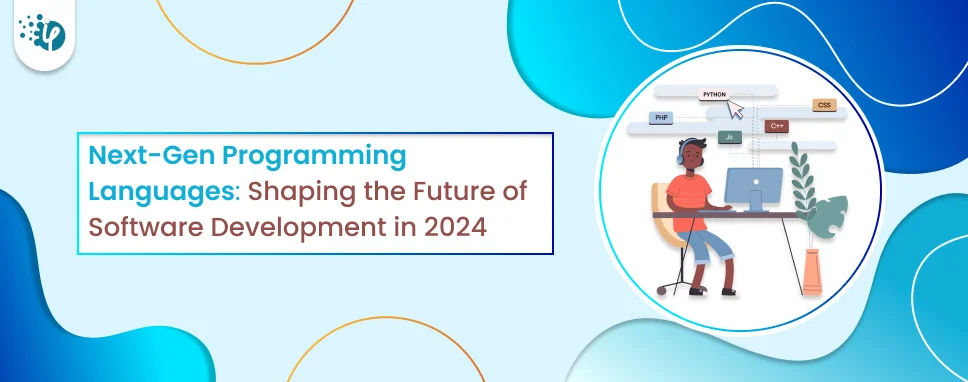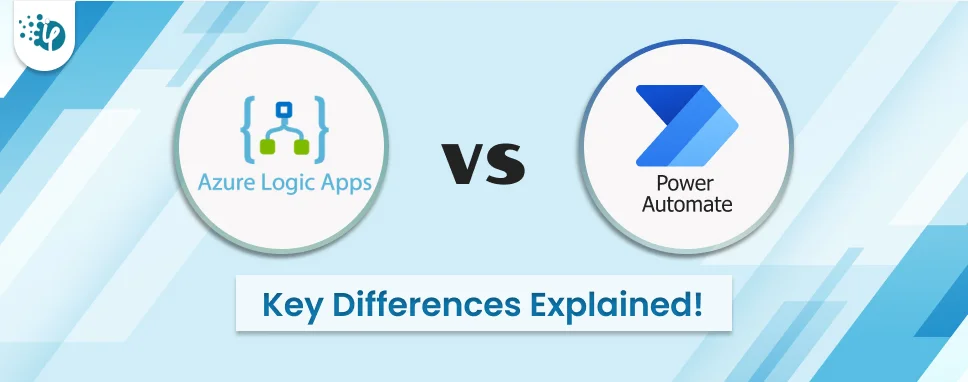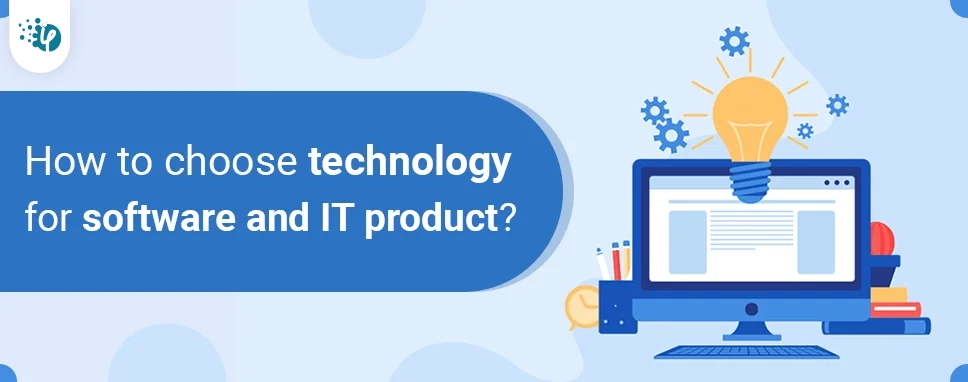Logic Apps vs Power Automate: 15 Key Differences Explained
Automating processes is crucial for the smooth running of business, whether it is in Legal, healthcare, transport, or Fintech. Several options are accessible to do this. But which...
Listening is fun too.
Straighten your back and cherish with coffee - PLAY !

Imagine standing in line at the grocery store, waiting to pay for groceries. You pull out your phone and scan each item’s barcode with a single tap. This seemingly simple task relies on a complex network of software, each line of code written in a specific programming language. From the self-checkout system to engaging WooCommerce Product Videos on e-commerce websites, the software makes our lives easier and simpler in the modern world.
As technology evolves, so do languages, offering greater flexibility, abstraction, and features. This drives the continuous need for further innovation in programming languages. This article explores next-generation programming languages, delving into how these languages are shaping the future of custom software development. Without further ado, let’s start!
Rust stands out among the rising stars in the next-generation programming language landscape for its unwavering commitment to memory safety and performance. Graydon Hoare designed Rust, and it aims to offer a powerful and reliable alternative to traditional system programming languages like C and C++.
Unlike C and C++, which are susceptible to memory leaks and dangling pointers, Rust’s ownership system guarantees memory safety at compile time. This eliminates entire classes of errors, leading to more robust and secure software.
Also, Rust shines in terms of raw speed, often rivalling C and C++ in performance-critical applications. This is achieved through zero-cost abstractions and a focus on efficient memory management.
Additionally, Rust empowers developers to write concurrent and parallel code with confidence. Its powerful borrowing checker ensures thread safety and prevents data races, making it ideal for building multi-threaded applications.
This programming language has many modern features. It boasts a modern syntax with features like pattern matching, closures, and generics, enhancing code readability and maintainability.
Now, let’s talk about Rust’s applications for software. To begin with, it’s quite useful for systems programming because of its focus on performance and memory safety. Also, web developers use this language extensively to build high-performance web services and APIs.
Moreover, the language’s speed and memory management make it suitable for developing game engines and performance-critical game components.
In the realm of next-generation programming languages, Kotlin has carved a niche for itself by streamlining Android development with its concise syntax, modern features, and interoperability with Java. Kotlin was developed by JetBrains and has rapidly gained traction, becoming the official language for Android development alongside Java.
Now, let’s discuss Kotlin’s main characteristics. It boasts a clean and concise syntax, often requiring less code than Java to achieve the same functionality. This makes code easier to read, understand, and maintain. Also, it seamlessly integrates with existing Java codebases, allowing developers to migrate their projects or work in mixed-language environments gradually.
This programming language enforces null safety at compile time, leading to more robust and reliable features. Kotlin offers many modern features like extension functions, data classes, and coroutines for asynchronous programming, enhancing developer productivity and code expressiveness.
Kotlin has many applications in software. To start, it’s the preferred choice for building Android apps, from simple utilities to complex games and enterprise applications. Also, frameworks like Spring Boot and Ktor leverage Kotlin to build high-performance and scalable server-side applications.
It’s excellent for multiplatform development, too, as Kotlin Multiplatform allows developers to share code across platforms, including Android, iOS, web, and desktop environments, increasing code reuse and reducing development time.
In the ever-evolving landscape of programming languages, Go stands out for its emphasis on simplicity, concurrency, and rapid development. Created by Robert Griesemer, Rob Pike, and Ken Thompson, Go aims to offer a lean and efficient language for building modern software applications.
Go boasts a clean and concise syntax, similar to C, but with features that eliminate common pitfalls like manual memory management. This makes the language easy to learn and use, even for developers with minimal programming experience.
Additionally, Go was built with concurrency in mind, offering built-in mechanisms like lightweight goroutines and channels for efficiently handling concurrent tasks. Thus, it’s ideal for building scalable and responsive applications that use multicore architectures.
This next-gen programming language prioritizes developer productivity with features like a fast compiler, built-in tooling, and a standard library designed for ease of use. This feature allows developers to focus on core logic rather than spending time on complex language constructs. The language is designed for simplicity, but it’s really efficient and can produce high-performance applications. Furthermore, its focus on concurrency facilitates the development of scalable services that can handle increasing loads.
We’ll focus on some applications for Go now:
Web development: Go shines in building web servers, APIs, and microservices due to its concurrency features and efficient handling of network requests. Frameworks like Gin and Echo facilitate the development of robust web applications.
Cloud development: Go’s scalability and simplicity make it a popular choice for building cloud-native applications and serverless functions that can easily be deployed and managed in cloud environments.
DevOps and tooling: Go’s efficiency and ease of use make it suitable for developing various DevOps tools and command-line applications.
When speaking of next-generation programming languages, Dart stands out for its versatility in bridging the gap between web and mobile development. Developed by Lars Bak and Kasper Lund, Dart has a clean syntax, strong tooling, and robust features that empower developers to build interactive web applications and native mobile apps from a single codebase.
Dart allows developers to write code once and deploy it to various platforms, including web browsers and mobile devices. This approach significantly reduces development time and resources compared to maintaining separate codebases for web and mobile.
It is compiled to machine code for native performance on mobile devices while also offering just-in-time (JIT) compilation for efficient web execution. This ensures smooth user experiences across platforms.
Going further, Dart offers many modern features like strong typing, null safety, and asynchronous programming, promoting code readability, maintainability, and reliability.
As it’s backed by Google, Dart enjoys an extensive ecosystem of libraries, frameworks, and developer tools, supporting various functionalities and streamlined development workflows.
Dart is another programming language that can be used for web development. Combined with its frameworks, its specialty is allowing web developers to build interactive web applications, single-page applications (SPAs), and progressive web apps (PWAs).
Used with its frameworks, Dart enables developers to create cross-platform applications that run seamlessly on web and mobile devices, reducing development efforts.
Crystal shines in the tapestry of next-generation programming languages with its unique blend of elegance, efficiency, and power. Developed by Ary Borenszweig, Juan Wajnerman, Brian Cardiff, and a passionate community, Crystal aims to offer a high-performance, readable, and expressive language for building robust software applications.
Let’s focus on Crystal’s characteristics now:
Crystal is also great for web development, like the next-generation programming languages we’ve discussed. Its performance and efficient framework ecosystem make it suitable for building high-performance web services, APIs, and microservices.
Its power and speed make it viable for building system-level tools, command-line applications, and libraries, where performance and control are crucial.
Besides that, Crystal’s growing ecosystem includes libraries and frameworks tailored for data science and machine learning tasks, expanding its potential applications in these domains.
Syntactic familiarity: Crystal’s syntax draws inspiration from Ruby, making it relatively easy to learn for developers familiar with Ruby or other similar languages. However, it goes beyond mere syntax similarity, offering a distinct set of functionalities and benefits.
Static type checking: Unlike Ruby, Crystal embraces static type checking, ensuring type-related errors are caught at compile time, leading to more reliable and secure software.
Optional type annotations: While statically typed, Crystal offers a powerful type inference system, often negating the need for explicit type annotations, making the code cleaner and more readable.
Performance: Crystal compiles to native code, resulting in high performance comparable to languages like C++. This makes it suitable for building performant applications where speed is critical.
Concurrency and metaprogramming: Crystal provides comprehensive support for concurrency through lightweight threads (fibers) and channels, enabling developers to build responsive and scalable applications. Additionally, its metaprogramming capabilities allow advanced developers to extend the language and create custom functionalities.
Power Platforms refer to a suite of software tools developed by Microsoft to help businesses automate tasks, streamline their operations, and gain insights from data. These platforms consist of three main components: Microsoft Power BI development, Power Apps, and Power Automate.
Power BI is a business analytics tool used to visualize data and share insights across any sector or embed them in an app or website. The best part is - it allows for the creation of interactive reports and dashboards to monitor key metrics and make data-driven decisions.
Power Automate, formerly known as Microsoft Flow, is a workflow automation tool that enables users to automate repetitive tasks and streamline business processes. It allows users to create automated workflows that connect various apps and services, eliminating manual tasks and improving efficiency.
Microsoft PowerApps is a low-code application development platform that allows users to create custom business applications without the need for extensive coding knowledge. It empowers organizations to build apps tailored to their specific needs, whether it's automating processes, digitizing forms, or managing data.
Microsoft Power Platform services help enterprises with a wide range of applications across industries and business functions. For example, Power BI, one of its major modules, helps the financial sector to analyze market trends and monitor investment performance.
Microsoft PowerApps can be used to automate loan approval processes using mobile apps, while Power Automate can be used to streamline account resolution tasks.
Overall, Power Platforms empower businesses to harness the power of data, automate processes, and drive innovation, ultimately leading to improved productivity, efficiency, and decision-making.
The landscape of programming languages is constantly evolving, driven by the ever-expanding needs of software development in various domains. Next-generation languages like Rust, Kotlin, Go, Dart, and Crystal are powerful tools that offer unique strengths and address specific challenges.
From Rust’s unwavering memory safety to Go’s conciseness and concurrency, these next-gen languages empower developers to build secure, performant, and scalable software applications with increased productivity and code quality. The ability of languages like Dart to bridge the gap between web and mobile development further highlights the innovative approaches shaping the future of software creation.
While each language has distinct characteristics and applications, they all share a common thread: the pursuit of efficiency, reliability, and developer experience. As these languages continue to evolve and mature, they will undoubtedly play a pivotal role in shaping the future of software development, creating even more innovative and groundbreaking applications that shape our world.

Automating processes is crucial for the smooth running of business, whether it is in Legal, healthcare, transport, or Fintech. Several options are accessible to do this. But which...

What is Blockchain Security is paramount in financial transactions. Software outsourcing companies have witnessed that cyber breaches are advancing at a higher rate than...

Despite having abundant options in the market, picking the right technology stack for a software development project is still a challenging task. As you delve deeper into the array...